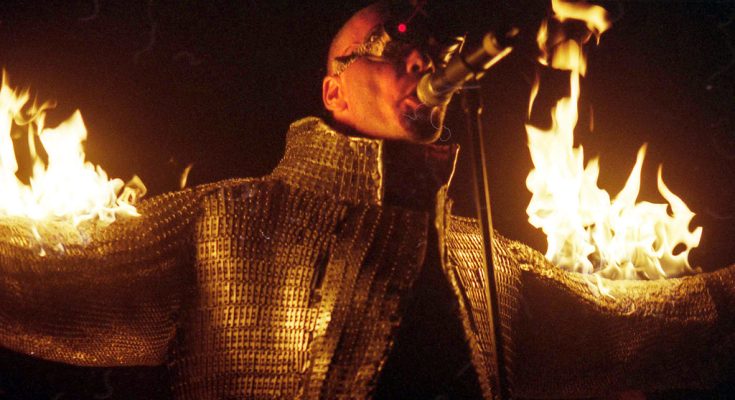Rammstein has long occupied a unique place in global rock and metal culture, a band that is as famous for its thunderous industrial sound as for its stagecraft steeped in provocation. Fire, smoke, leather, grotesque imagery, and heavy symbolism are all part of the band’s carefully cultivated aesthetic. Yet, with that reputation has also come controversy, and one of the most enduring criticisms aimed at the German group is their alleged glamorization of Nazi-era aesthetics, raising the question of whether Rammstein is simply playing with fire for shock value or engaging in a more nuanced commentary on German history and culture.
The accusations are not new. Ever since their breakthrough in the mid-1990s, critics and commentators have drawn lines between Rammstein’s militaristic imagery and Germany’s darkest historical chapter. The sharp, goose-step rhythms of their music, the martial stage formations, and the frequent incorporation of German cultural iconography have led some to question whether their art is merely a provocation or something more problematic. The band, for its part, has repeatedly denied any ideological alignment with the far right, often stressing that their work is misunderstood satire or a reflection of Germany’s ongoing struggle to confront its past. But the debate refuses to die down, and it has resurfaced every time Rammstein has released new music or staged another spectacular performance.
Part of the issue lies in Rammstein’s mastery of shock value. Their music videos and concerts are notorious for testing the boundaries of taste and morality. From controversial depictions of sexuality and violence to the use of military imagery, the band thrives on confrontation. Their 1998 video for “Stripped,” which incorporated footage from Leni Riefenstahl’s 1936 Olympic propaganda film, sparked one of the earliest accusations of Nazi aesthetic appropriation. The decision to use imagery crafted by one of Adolf Hitler’s most prominent propagandists was seen by some as crossing a dangerous line, even if the band claimed the intention was purely artistic. For critics, the use of such material, regardless of intent, inevitably risked glamorizing a style of filmmaking and symbolism that had been employed to advance a genocidal ideology.
The controversy surrounding “Stripped” has haunted Rammstein for decades. To this day, it serves as Exhibit A in the argument that the band deliberately toys with Nazi aesthetics for attention. Defenders, however, point out that many artists, from punk bands to avant-garde filmmakers, have repurposed provocative imagery in an attempt to strip it of its original power. They argue that Rammstein is less interested in celebrating such visuals than in confronting Germany’s past head-on, holding up a mirror to the country’s history and forcing audiences to confront their discomfort.
What complicates the matter is the ambiguity of Rammstein’s art. Unlike explicitly political bands, Rammstein rarely offers clear commentary in its lyrics or public statements. Their songs are often open to interpretation, laced with double meanings and metaphor. This ambiguity allows them to engage with taboo subjects but also leaves them vulnerable to accusations of irresponsibility. Critics argue that when dealing with imagery tied to Nazi propaganda, ambiguity can easily slip into perceived endorsement. The danger, they suggest, is not that Rammstein’s members are secretly aligned with far-right ideology but that their artistic choices may normalize or glamorize aesthetics tied to a murderous regime.
The band’s live shows add fuel to the debate. Rammstein’s stagecraft is famously theatrical, featuring uniform-like costumes, rigid choreography, and a militaristic sense of order. Combined with the pounding, martial quality of their music, the effect is undeniably reminiscent of authoritarian spectacles. Their use of fire and pyrotechnics amplifies this effect, creating an atmosphere of controlled chaos and overwhelming force. For some, these performances are thrilling art that plays with the boundaries of power and control. For others, they evoke too closely the imagery of rallies, parades, and propaganda spectacles that defined Germany under the Third Reich.
The accusations also gain weight in the broader context of Germany’s postwar cultural landscape. Germany has long grappled with how to deal with its Nazi past, from education and memorialization to art and entertainment. The line between remembering history and trivializing it is often precariously thin. In this context, Rammstein’s choice to engage with controversial aesthetics is particularly sensitive. Unlike in other countries, where provocative imagery may be seen as mere rebellion, in Germany such provocations carry an unavoidable historical burden. Critics argue that a German band using Nazi-like imagery cannot escape the weight of that history, no matter the intention.
Yet, it would be simplistic to frame Rammstein as merely exploiting Nazi aesthetics. Over the years, the band has also used its platform to critique nationalism, authoritarianism, and xenophobia. Their 2019 video for “Deutschland,” for example, sparked both outrage and praise for its complex portrayal of German history, including scenes referencing concentration camps. Some saw the video as offensive, while others praised it for its unflinching acknowledgment of Germany’s violent past. Once again, the band was accused of playing with fire, but this time the context suggested a deeper engagement with history rather than mere shock tactics.
The persistence of these accusations raises questions about the role of art in society. Should artists avoid provocative imagery tied to fascism altogether, out of respect for history and its victims? Or is there value in reclaiming such aesthetics, using them to challenge audiences and provoke critical reflection? Rammstein’s defenders argue that avoiding the subject entirely would amount to cultural amnesia, while their critics warn that artistic provocation can too easily slip into normalization.
There is also the matter of global reception. Rammstein’s audience extends far beyond Germany, and in many countries the nuances of German historical context may be lost. What to a German audience might read as an uncomfortable confrontation with national history may to others appear as an uncritical embrace of authoritarian aesthetics. The danger, critics argue, is that fans unfamiliar with the historical weight of these symbols may interpret them in ways the band never intended. For a group as globally successful as Rammstein, this risk is significant.
The band itself has often addressed the controversy with a mix of denial, humor, and defiance. They have rejected accusations of political alignment and insisted that their work should be seen as art, not propaganda. At times, they have even seemed to relish the controversy, seeing it as proof that their art is provoking the desired reaction. Yet, this attitude does little to silence critics who argue that playing with Nazi aesthetics, even ironically, is irresponsible in an era when far-right movements are on the rise across Europe and beyond.



